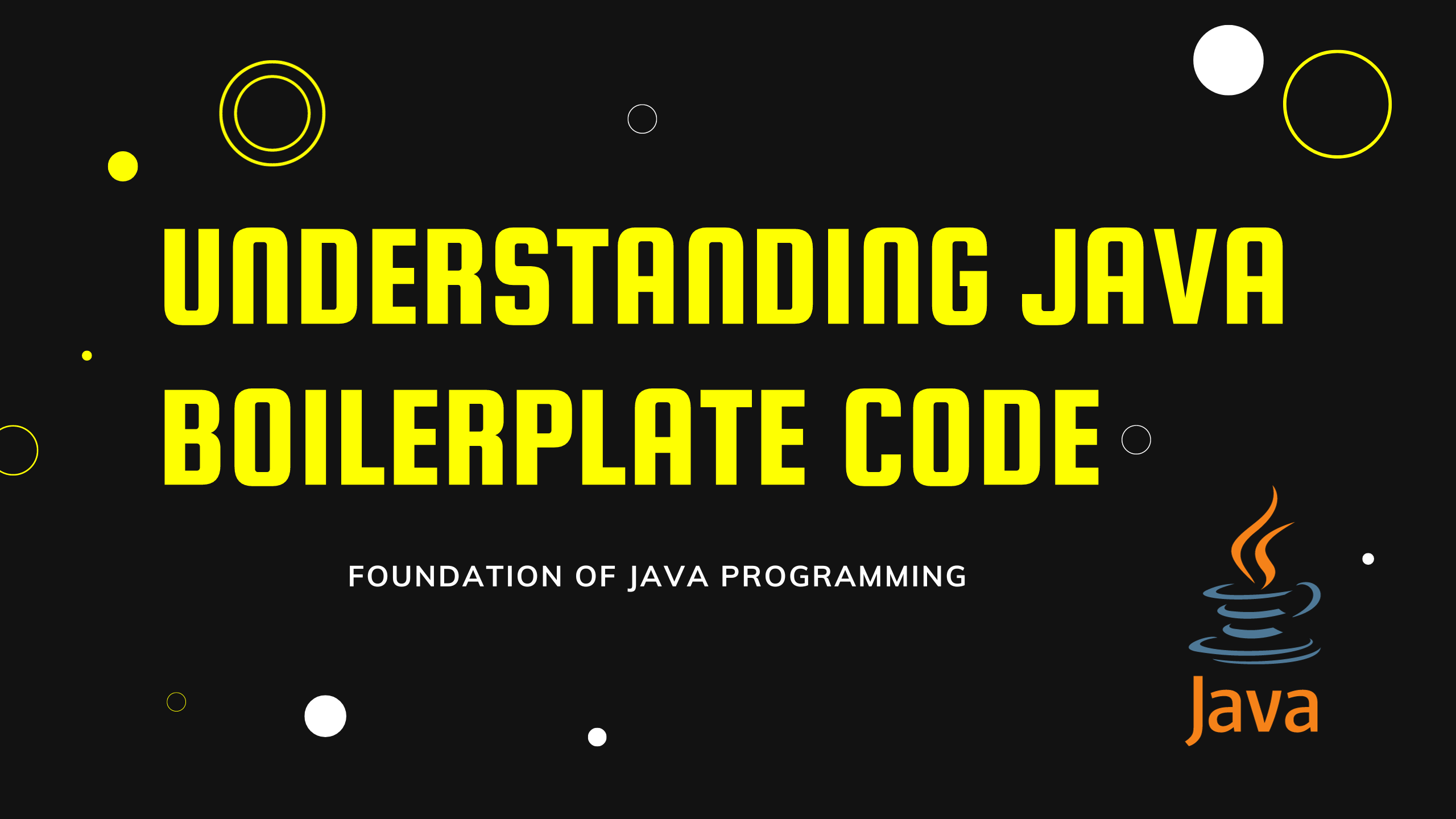Understanding Java Boilerplate Code
 kunal gavhane
kunal gavhane
Java programming often includes lots of code that may look repetitive and complex. This is what we call "boilerplate code." While it might seem confusing at first, boilerplate code is essential for making your Java program work correctly.
Hi, I'm Kunal Gavhane, a software developer, and in this article, we'll take a look at a simple Java class, including the main function, and break down the boilerplate code in plain and easy-to-understand language.
A Simple Java Class
Let's start with a straightforward Java class. Below is an example:
public class HelloWorld {
public static void main(String[] args) {
System.out.println("Hello, World!");
}
}
This class is named HelloWorld, and it has a main function. Now, let's go through each part of this class and understand what it does.
public class HelloWorld
public: This word tells us that other parts of our program can access this class. It's like saying, "Hey, everyone, you can use this!"class: Here, we're saying that we're creating a class in Java. Think of a class as a blueprint for something we want to create.HelloWorld: This is the name we've given to our class. We can choose any name we like.
public static void main(String[] args)
public static: These are special words that mean we can use this method without needing to create something from this class. It's like having a magic button that we can press without needing a special machine.void: This word means that the method doesn't give us anything back. It's like when we press a button, and it doesn't give us a gift; it just does something.main: This is the name of the method, and it's very important. In Java, every program starts running from a method calledmain.(String[] args): This part tells the method what information it can use. In this case, it can use some information stored in a special box calledargs.
System.out.println("Hello, World!");
This line does something cool; it shows the words "Hello, World!" on the computer screen. It's like when you tell the computer to say "Hello" to you.
Understanding the Boilerplate Code
Now, let's talk about the "boilerplate code" in our basic class:
The
public class HelloWorldpart is something we need in every Java class. It tells the computer that we're creating a class, and we're giving it a name.The
public static void main(String[] args)part is a special code that every Java program has. It's like the starting point of our program, and it needs to have exactly this name and format.The line
System.out.println("Hello, World!");is a part of our program's actual job. While it's not really "boilerplate code," it's an essential part of what our program does.
Boilerplate code might seem tricky, but it's like the building blocks of your Java programs. Understanding these basics is like knowing how to put together a simple puzzle. As you keep learning Java, you'll find more pieces to the puzzle, especially when you work on bigger projects or use fancy tools. But remember, it all starts with these simple building blocks. So, don't be afraid of the boilerplate, and have fun with your Java coding..........
This article breaks down a basic Java class and explains the boilerplate code in simple terms. It helps beginners understand the fundamental components of a Java program and how they fit together. Learning these basics is a great step in your journey to becoming a Java programmer.
I hope this article has shed light on Java boilerplate code and made it more accessible for you. As we journey through the world of programming, there's always more to explore and learn.
If you found this information helpful and want to continue discovering the exciting realm of coding, don't hesitate to connect with me. Follow my journey on Twitter(X) : https://twitter.com/iam_kgkunal , where I share insights, tips, and more about the world of programming and web development.
Subscribe to my newsletter
Read articles from kunal gavhane directly inside your inbox. Subscribe to the newsletter, and don't miss out.
Written by

kunal gavhane
kunal gavhane
Where people see a problem, we see an opportunity and a new project! Hello, I am an Engineer;